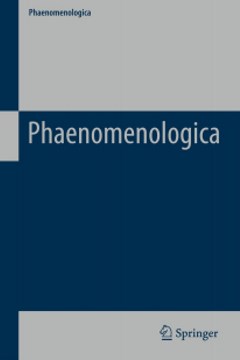Repository | Book | Chapter

(2002) One hundred years of phenomenology, Dordrecht, Kluwer.
Categories, diagrams, schemata the cognitive grasping of ideal objects in Husserl and Peirce
Frederik Stjernfelt
pp. 147-167
The question of the status, the presentation, and the representation of ideal objects has received new actuality in recent years as the result of various scientific and philosophical developments. In cognitive science and computer science, concepts like scripts, schemata, frames, diagrams have received renewed attention as opposed to supposedly purely formal logical representations;1 in complexity theory, it has been suggested that all sufficiently complex adaptive systems must include a general, schematic representation of aspects of its environment;2 in the renaissance of Austrian philosophy and phenomenology in general, new attention has been paid to a priori structures and their representation.3 As all of these developments show, the grasping of ideal objects pertains not only to mathematics and logic—even if they form an important case—but also to everyday cognition, as most cognitive acts are not simple and involve general, ideal elements in what Husserl calls "sinnlich gemisschte" form.
Publication details
DOI: 10.1007/978-94-017-0093-1_10
Full citation:
Stjernfelt, F. (2002)., Categories, diagrams, schemata the cognitive grasping of ideal objects in Husserl and Peirce, in D. Zahavi & F. Stjernfelt (eds.), One hundred years of phenomenology, Dordrecht, Kluwer, pp. 147-167.



